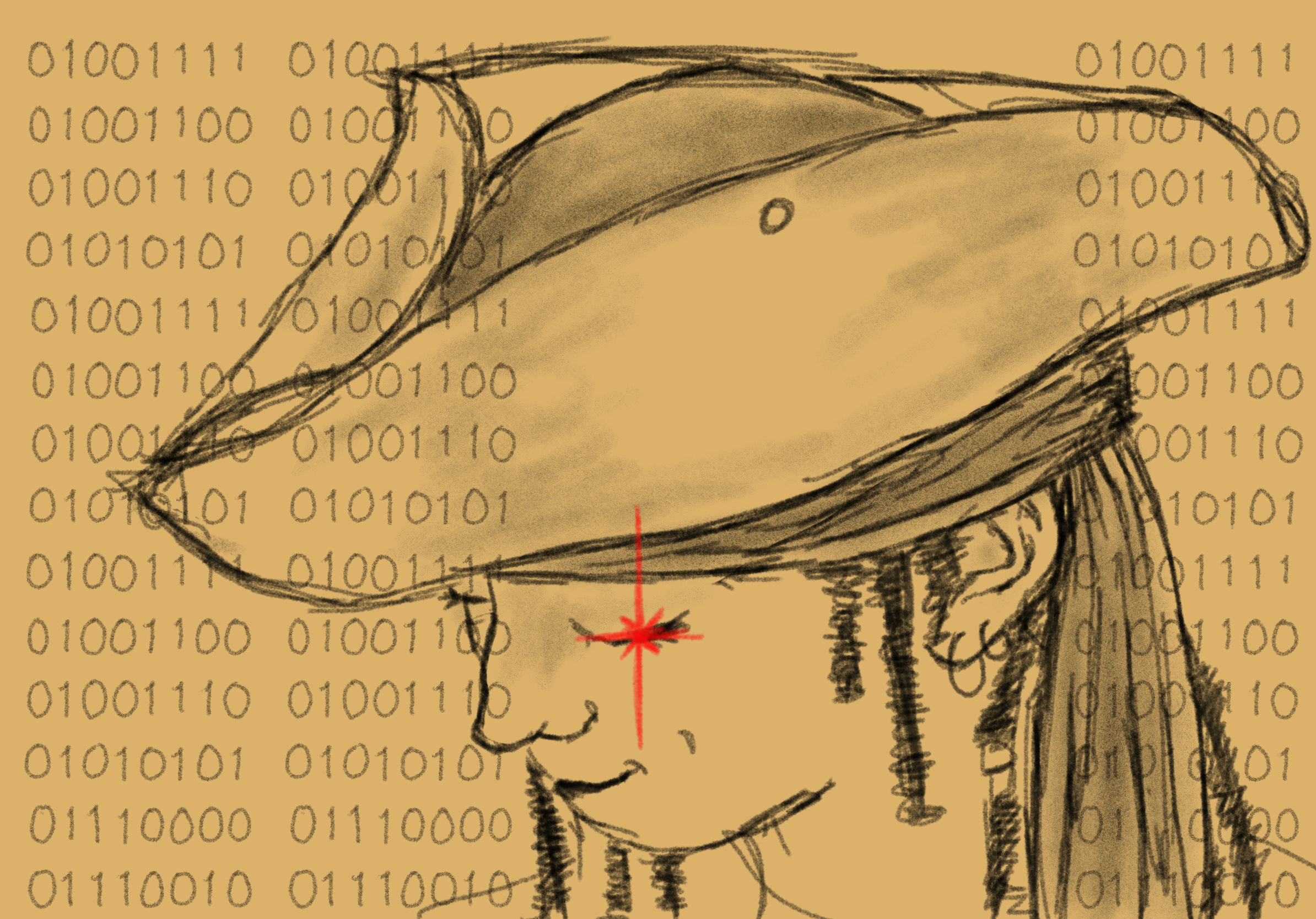_Online%20Learning%3B%20by%20Sam%20Grinnell_.jpg)
I remember being in the library in March, studying the literary works of Oscar Wilde with a group. We were all sitting comfortably, within six feet of each other, without masks, at a well-used table smack-dab in the middle of the crowded library when it was suddenly announced that classes would be transitioning online, effective almost immediately.
At this point, COVID-19 had not collectively impacted every aspect of student life or life in general, and though class attendance was rapidly dwindling, the world as we knew it was not drastically altered — yet.
The news spread like wildfire and soon every study group was wide-eyed and genuinely confused at what was to come, and it seemed like every student felt a wave of uncertainty at the exact same time: we awkwardly shuffled in our suddenly extremely dirty seeming seats, panicked, and exited the library while furiously sanitizing our hands and temporarily using the sleeves of our sweaters as masks.
At first, despite all of the horrible things going on in the world—the emerging of the COVID-19 pandemic that claimed and continues to claim lives— many students, myself included, were slightly (and selfishly) relieved that courses were online because we were able to have a break from midterms and projects.
We were somewhat grateful to hit snooze on our alarm clocks and have the luxury of wearing PJs and bunny slippers all day instead of attending classes in person, and it felt more like a welcome vacation than an urgent necessity.
However, the reality of the situation quickly settled in, and with it came the realization that we would have to complete the rest of the semester online, during this unprecedented global pandemic. The transition to online learning was certainly a tumultuous one. It was a steep learning curve not only for students, but also for professors who were also in the dark, finding out about the transition at the same time as their students.
Students were faced with the challenge of having to navigate their already stressful lives amidst a global pandemic and needed to adapt to all of the changes that come with the suspension of in-person classes. While learning online may sound straightforward in theory, in practice, the challenges are greater, particularly when the transition is sudden and unexpected.
Though every student’s situation is unique, the difficulty and challenge of transitioning to online learning remain more or less the same. Some students may not have had the proper technology needed for effective online learning, or may not have had the most ideal living situation. This alone presents the problem of needing to spend more money in order to learn effectively, as well as having to find a way to learn in a space that is quiet, focused, and conducive to learning. This can be difficult when trying to study from home during quarantine as there are a myriad of distractions that can disrupt learning, including a full and loud household, entertainment, pets, chores—the list goes on.
Not only are there distractions, but there are also more variables that need to be considered when learning online, such as stable WiFi connection, headphone, microphone, and webcam accessibility, proctored exams, online attendance and participation at lectures delivered via Zoom or Collaborate Ultra—all of these things which are new and unusual to students. For some students, online learning is done within the comfort of their bed, or in an office, and for others, it is done in a makeshift set up with a wooden dresser acting as a desk and a kitchen stool as an office chair. Although students have had more time now to modify their surroundings in order to best help them learn at home, it was (and still is) a steep learning curve to completely change the way one studies and learns. Focusing on school during a global pandemic can also sometimes feel hopeless and unnecessary, considering the current state of the world.
In addition, professors also endured this steep learning curve as they were faced with the difficult task of quickly converting their courses online. While there were some professors who made the transition as seamless as possible, other professors struggled with using technology as a means of teaching, leaving much to be desired in regards to quality education.
Naturally, it is difficult for students to properly learn when their professors are unprepared to teach in this new format and do not provide the same level of education as they once did in person. However, it cannot go unnoticed that UBC professors worked diligently and tirelessly to do their best under the circumstances and accommodate students accordingly.
It is undeniable that the transition to online learning during a global pandemic has been a steep learning curve for students and professors alike. We are all learning how to be productive in this new normal and how to study or teach as effectively as possible, considering the grave circumstances that surround our everyday lives.
Though there are inherent challenges that come with such an unexpected transition to online learning, it is important to acknowledge that we are all doing our best to adapt and grow under these challenging circumstances.
Our University is actively doing its part to help others stay safe, and that’s what matters most.




